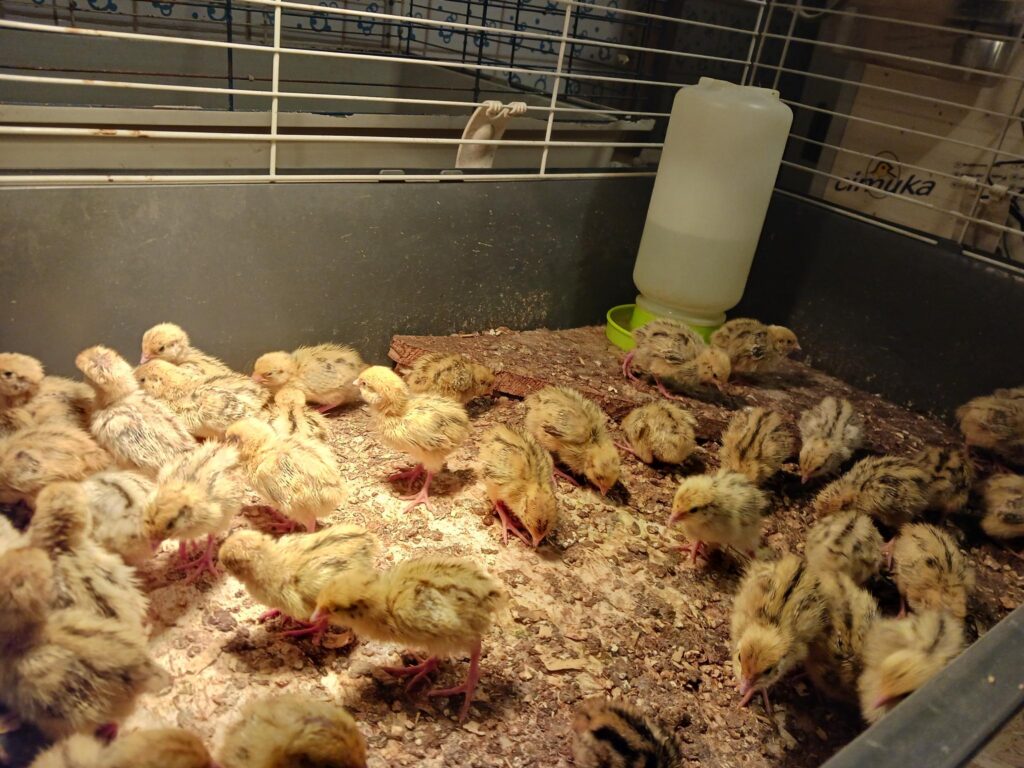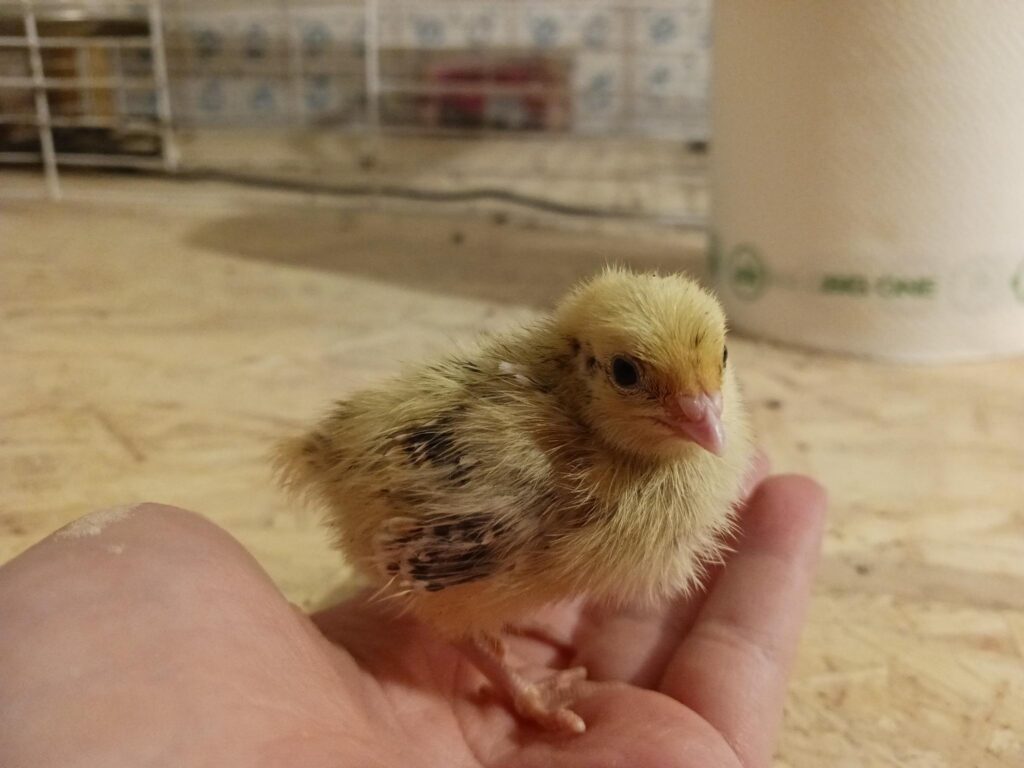The waiting is over, and the numbers are in: 60 healthy quail chicks successfully hatched from our batch of 116 eggs. While we’d hoped for higher numbers, seeing those tiny balls of fluff scampering around the brooder never gets old, and there’s plenty to celebrate in this hatch.
The Final Tally
Hatch Rate: 52% (60 out of 116 eggs)
Given the circumstances, this 52% hatch rate is actually quite impressive. When you’ve been dealing with constant power outages from thunderstorms during the critical incubation period, every successfully hatched chick represents a victory against the odds.
Sixty healthy, active quail chicks is still a significant success, especially when you consider that each one of these little ones will grow into a productive adult bird in just a few months.

Weather Challenges
This hatch faced significant obstacles that were completely beyond our control: constant power outages from thunderstorms throughout the incubation period. Estonian weather can be unpredictable, but the frequency of power interruptions during these crucial 17 days was exceptional.
Each power outage meant temperature drops in the incubator, disrupted turning schedules, and stress on the developing embryos. While our generator kept the incubator from complete shutdown, the constant fluctuations in power supply created far from ideal conditions for consistent development.
The fact that 60 chicks successfully hatched despite these challenges speaks to both the resilience of the developing quail and the importance of backup systems during incubation.
Hatch Day Drama
The hatch didn’t follow the textbook timeline—partly due to the power disruptions affecting development timing. Instead of the neat 24-48 hour window we’d planned for, our chicks decided to make their debut over nearly three days. The first brave little explorer pipped on day 16, earlier than expected, while the last stragglers didn’t make their appearance until late on day 18.
This extended hatch window, likely influenced by the inconsistent conditions during incubation, kept us on our toes, constantly checking the incubator and resisting the urge to “help” chicks that seemed to be taking their time. The hardest part of any hatch is knowing when to intervene and when to let nature take its course—especially when you know the conditions haven’t been optimal.

What Worked Well
Several factors contributed to our success with these 60 chicks:
Temperature consistency was excellent throughout the 17-day period. Our incubator maintained a steady 37.5°C with minimal fluctuation, which is crucial for proper development.
Humidity management during lockdown seemed spot-on. The chicks that hatched showed good development and minimal shrink-wrapping issues, indicating we hit the right moisture levels when it mattered most.
Egg quality from our breeding stock continues to improve. The chicks that did hatch are robust, active, and show excellent vigor—exactly what you want to see in a successful breeding program.
Learning from the Challenge
A 52% hatch rate under normal conditions might prompt concerns about breeding stock or incubation techniques. But considering the constant power disruptions from storms, this result actually demonstrates the resilience of both our breeding program and our emergency management systems.
The 56 eggs that didn’t hatch likely fell victim to the temperature fluctuations and power interruptions rather than fundamental breeding or incubation issues. When embryos experience repeated temperature drops and power cycling, even briefly, it can disrupt critical development stages that can’t be recovered.
This experience has reinforced the importance of reliable backup power for serious incubation operations, especially during Estonia’s unpredictable storm seasons.
Brooder Life Begins
Those 60 successful chicks are now thriving in their brooder setup. The transition from incubator to brooder went smoothly—always a relief after the stress of hatch day. They’re eating, drinking, and displaying that characteristic quail energy that makes them such entertaining birds to watch.
The brooder temperature is set at 37°C for their first week, with plans to reduce it gradually as they develop their own temperature regulation. Feed consumption is already impressive; these little ones have appetites that seem disproportionate to their size.
Looking Forward
This challenging hatch has taught us valuable lessons about incubation during severe weather. We’re already planning improvements to our backup power systems and considering additional temperature stabilization methods for future storm seasons.
The next incubation batch will hopefully benefit from more stable weather conditions, allowing us to test our breeding program and incubation techniques under optimal circumstances. Sometimes you need the challenging hatches to appreciate the smooth ones and to identify areas for system improvements.
60 healthy chicks from a storm-interrupted incubation is something to be proud of, and we’re excited to see how these resilient little birds develop.
The Bigger Picture
While we always hope for maximum hatch rates, the reality is that 60 healthy quail chicks represents real success in sustainable farm production. Each bird that successfully hatches and thrives contributes to our farm’s diversity, productivity, and long-term sustainability goals.
In the grand scheme of our farming journey, this hatch is another step forward. We’re building experience, improving our techniques, and growing our operation one successful hatch at a time.
The brooder is bustling, the chicks are thriving, and we’re already planning the next batch. Sometimes farming is about celebrating the successes you achieve rather than mourning the perfection you didn’t quite reach.
How do your hatch rates compare? Share your incubation experiences and tips in the comments below—we love hearing from fellow bird enthusiasts about their successes and challenges!
What’s been your most rewarding hatch, regardless of the numbers? Tell us about your best hatching moments!